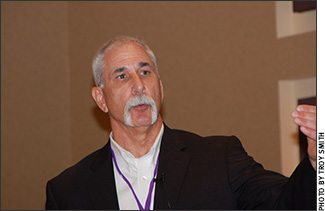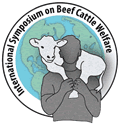New Mitigation Option for Heat Stress
Yeast supplementation may be another tool for heat mitigation.
Heat mitigation is an increasingly important issue, and there are several strategies at cattlemen’s disposal, especially in the feedlot. Shade, ration changes, changing feeding times, spraying or misting, and improving water availability are all tools within the toolbox, but morbidity and mortality continue to be a significant issue in U.S. feedlots. Heat stress has cost the industry at least $369 million, said Jeff Carroll, research leader in livestock issues research for USDA Agricultural Research Service (ARS) in Lubbock, Texas.

More research will be useful, but Jeff Carroll said the majority of the data would indicate that supplementation with live yeast and yeast cell wall product to feedlot heifers may mitigate some of the negative effects associated with heat stress.
The Texas researcher spoke at the fifth International Symposium on Beef Cattle Welfare (ISBCW) in Manhattan, Kan., June 8-10. He shared that previous research indicated supplementing yeast products during a period of naturally occurring heat stress improved feed intake and gain without jeopardizing the health of the cattle. It also enhanced overall health status and showed a greater resistance to an endotoxin challenge after the heat event.
Carroll shared a recent study from his research team evaluating whether supplementing the diet of near-finished beef cattle with a yeast product would mitigate the negative impact of a controlled heat stress on physiological and endocrine responses.
Beef heifers were supplemented with a live yeast and a yeast cell wall product for 50 days, which Carroll said was a normal receiving situation. Thirty-two head were transported to the USDA Bovine Immunology Research and Development Complex, in which humidity and temperature could be controlled. The diet was steam-flaked corn, and the supplemented group received a top dressing of the yeast supplement.
A heat event was created to simulate what feedlot cattle have to deal with, especially when it doesn’t get cool enough at night to fully recover.
 Carroll admitted that the data set was small, but he shared that the yeast-supplemented cattle had a consistently lower vaginal temperature during the heat-stress event, though they consumed much more water. They exhibited lower respiratory rates during the heat-stress event. They also lost 6.34 pounds (lb.) less than the control-group animals.
Carroll admitted that the data set was small, but he shared that the yeast-supplemented cattle had a consistently lower vaginal temperature during the heat-stress event, though they consumed much more water. They exhibited lower respiratory rates during the heat-stress event. They also lost 6.34 pounds (lb.) less than the control-group animals.
Additionally, supplemented cattle had lower cortisol levels over time, and he noted that they acclimated well in stress hormone response. There were no significant changes in glucose levels or nonesterified fatty acid (NEFA) concentrations.
More research will be useful, but Carroll said the majority of the data would indicate that supplementation with live yeast and yeast cell wall product to feedlot heifers may mitigate some of the negative effects associated with heat stress.
Watch for additional coverage of the 2016 ISBCW on www.angus.media and in the Angus Journal and Angus Beef Bulletin. Comprehensive meeting coverage will be archived at www.api-virtuallibrary.com/meetings_other_news.html.







